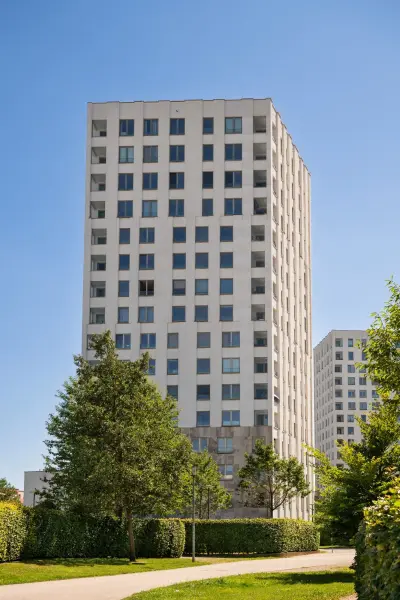
Real Estate Prices in 2023: A Year of Recovery
Real Estate Prices in 2023: A Year of Recovery
The real estate market in 2023 has been a year of recovery following the significant impacts of the COVID-19 pandemic. As the world gradually rebounds, the housing market is beginning to stabilize, showing signs of growth after a period of uncertainty and volatility. Real estate prices are once again rising in many areas, though the pace and extent of recovery vary depending on the region and market dynamics. This article will explore how the real estate market has been recovering post-pandemic, with a focus on market fluctuations, evolving buyer behaviors, and what this means for the future of housing.
1. Post-Pandemic Recovery and Real Estate Price Trends
The COVID-19 pandemic caused widespread disruption across the global economy, and the real estate market was no exception. In the early months of the pandemic, many housing markets experienced a sharp decline due to economic uncertainty, job losses, and a reluctance to buy or sell properties. However, as we entered 2023, the housing market showed significant signs of recovery.
One of the key trends in 2023 has been the steady increase in real estate prices. Despite some initial concerns about rising interest rates and inflation, home prices in many regions have continued to climb. This has been driven by a combination of factors, including a limited supply of homes, low inventory levels, and increasing demand from buyers looking for more space and stability after the chaos of the pandemic.
In cities and suburban areas, prices have surged due to the continued shift toward remote work and flexible living arrangements. People are seeking larger homes with more room for home offices, outdoor spaces, and recreational areas. This demand for more spacious properties has led to price increases in suburban markets, which were once considered less desirable compared to city centers.
However, not all markets have seen the same level of growth. While some areas are experiencing a full recovery, others are still grappling with challenges such as affordability issues and slower economic recovery. In cities where inventory is still low, such as coastal regions or major metropolitan areas, price growth has been particularly strong.

2. The Impact of Remote Work on Housing Demand
One of the most profound shifts in buyer behavior in 2023 has been the increased demand for homes that cater to remote work. The pandemic forced many people to work from home, and even as offices reopen, many companies have opted for hybrid or remote-first models. This shift in work culture has had a direct impact on the types of properties buyers are seeking.
Buyers are now prioritizing homes with dedicated office spaces, larger layouts, and proximity to outdoor amenities. The rise of hybrid work has driven demand for homes in suburban and rural areas, where larger properties with more land are available at lower prices than in urban centers. As people continue to work from home, the need for a comfortable, functional living space has become a top priority.
This trend has also led to a greater focus on homes with energy-efficient features and improved air quality, as people spend more time indoors. Buyers are willing to pay a premium for homes that offer a better quality of life, such as properties with home office setups, eco-friendly designs, and sustainable materials.
3. Rising Interest Rates and Market Adjustments
Another factor impacting real estate prices in 2023 has been the rising interest rates, a direct consequence of efforts by central banks to combat inflation. In response to inflationary pressures, the Federal Reserve and other global monetary authorities have raised interest rates, which in turn affects mortgage rates.
For potential buyers, higher interest rates mean higher monthly payments on mortgages, which can make homes less affordable, especially for first-time buyers or those on a tighter budget. As a result, some buyers have been priced out of the market, leading to a slowing of price growth in certain regions. In more expensive markets, the impact of rising rates has been felt more acutely, causing a slight cooling in the price increases.
However, while rising rates have dampened the pace of growth in some areas, they have not caused a widespread crash in home prices. Many buyers are still willing to purchase homes at higher rates, particularly in markets where demand is high, and inventory is low. The impact of rising rates has been most significant in the luxury home market, where high prices and larger mortgages have made purchasing more challenging for some buyers.

4. Seller Behavior and the Shift in Inventory
Sellers in 2023 have become more confident as real estate prices continue to rise, and many are taking advantage of the market’s recovery. The number of homes on the market has begun to increase, as more sellers list their properties with the expectation of achieving favorable prices. However, inventory levels remain relatively low in many areas, as there is still a reluctance among some homeowners to sell, especially those who have low mortgage rates locked in from the pandemic period.
This low inventory, combined with strong demand, has created a competitive market for buyers. Bidding wars are still common in many areas, particularly in desirable neighborhoods or those with limited housing stock. In some cases, homes are selling above asking price, as buyers are eager to secure a property in a fast-moving market.
In contrast, some sellers are choosing to hold off on listing their homes due to rising mortgage rates, fearing they might not get as favorable a deal on their next property. This reluctance to sell is contributing to the inventory shortage and is a major factor in driving up home prices in certain markets.
5. Buyer Behaviors and Evolving Preferences
Buyer behavior in 2023 has evolved, with several factors influencing decision-making. One of the most significant changes has been the growing importance of location flexibility. With remote work becoming more widespread, buyers are no longer constrained by their proximity to the office. Many are opting for homes in less expensive areas with more space, allowing them to enjoy a better quality of life at a lower cost.
In addition, there is an increased focus on sustainability and energy efficiency. More buyers are looking for homes that incorporate eco-friendly features, such as solar panels, energy-efficient appliances, and sustainable building materials. As concerns over climate change grow, environmentally conscious buyers are willing to invest in homes that offer long-term savings on energy bills and reduce their carbon footprint.
Technology has also played a larger role in the buying process. Virtual home tours, digital consultations, and online mortgage applications have become more commonplace, making it easier for buyers to explore properties remotely and make informed decisions.

6. Looking Ahead: What’s Next for Real Estate?
Looking ahead, the real estate market in 2023 is expected to continue its recovery, though challenges remain. Interest rates may continue to rise, which could slow down some of the growth in home prices. However, as long as demand remains strong, particularly in suburban and rural areas, the overall trend is likely to be positive.
As remote work continues to shape the housing market, it’s likely that we will see ongoing demand for homes with more space, outdoor amenities, and flexible living layouts. In addition, as sustainability becomes a key consideration for many buyers, eco-friendly homes will likely become even more sought after.
In conclusion, 2023 has been a year of recovery for the real estate market, marked by rising home prices, evolving buyer preferences, and a changing landscape of market dynamics. While challenges such as rising interest rates and low inventory remain, the market has shown resilience and adaptability in the face of a post-pandemic world. For both buyers and sellers, staying informed about market trends and adapting to new demands will be key to navigating the future of real estate.











